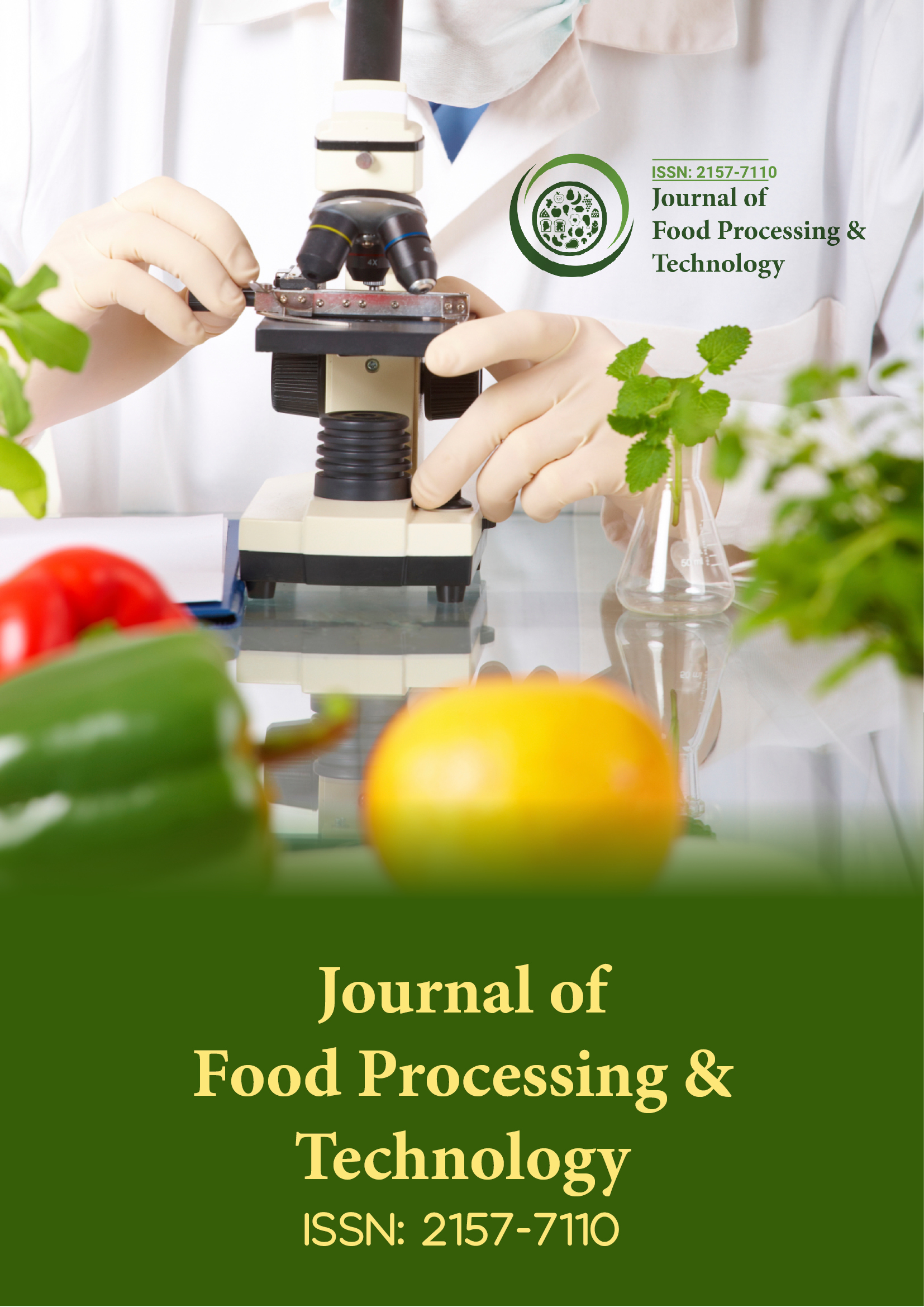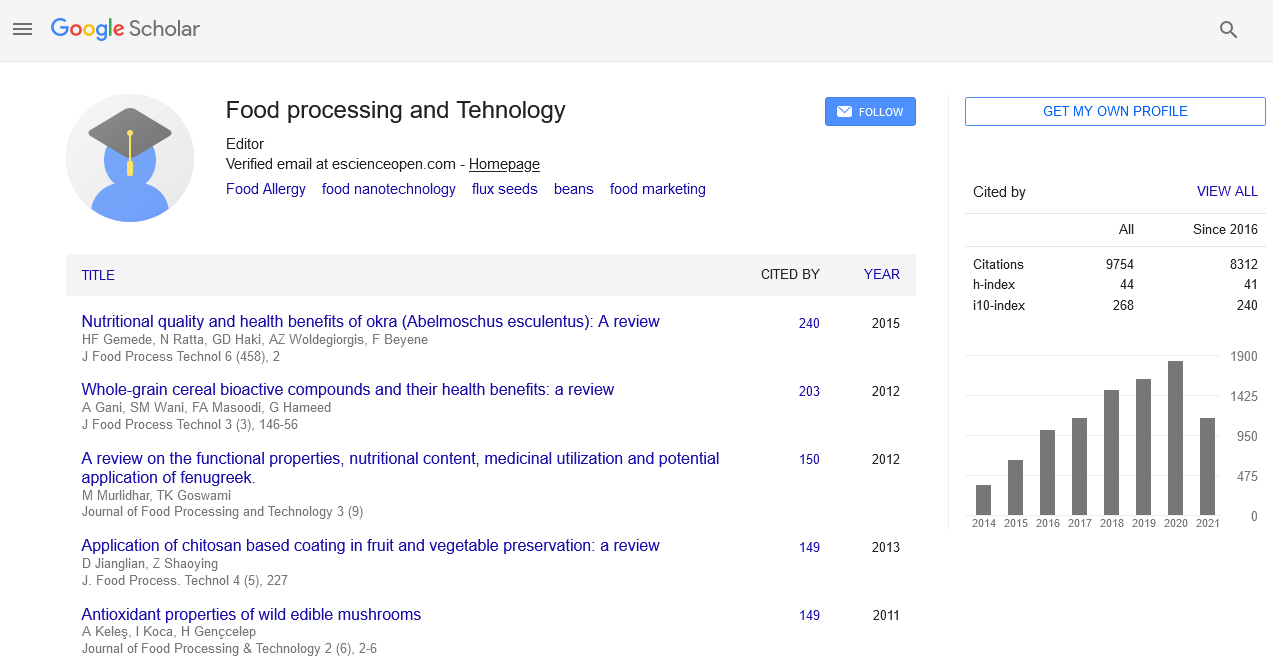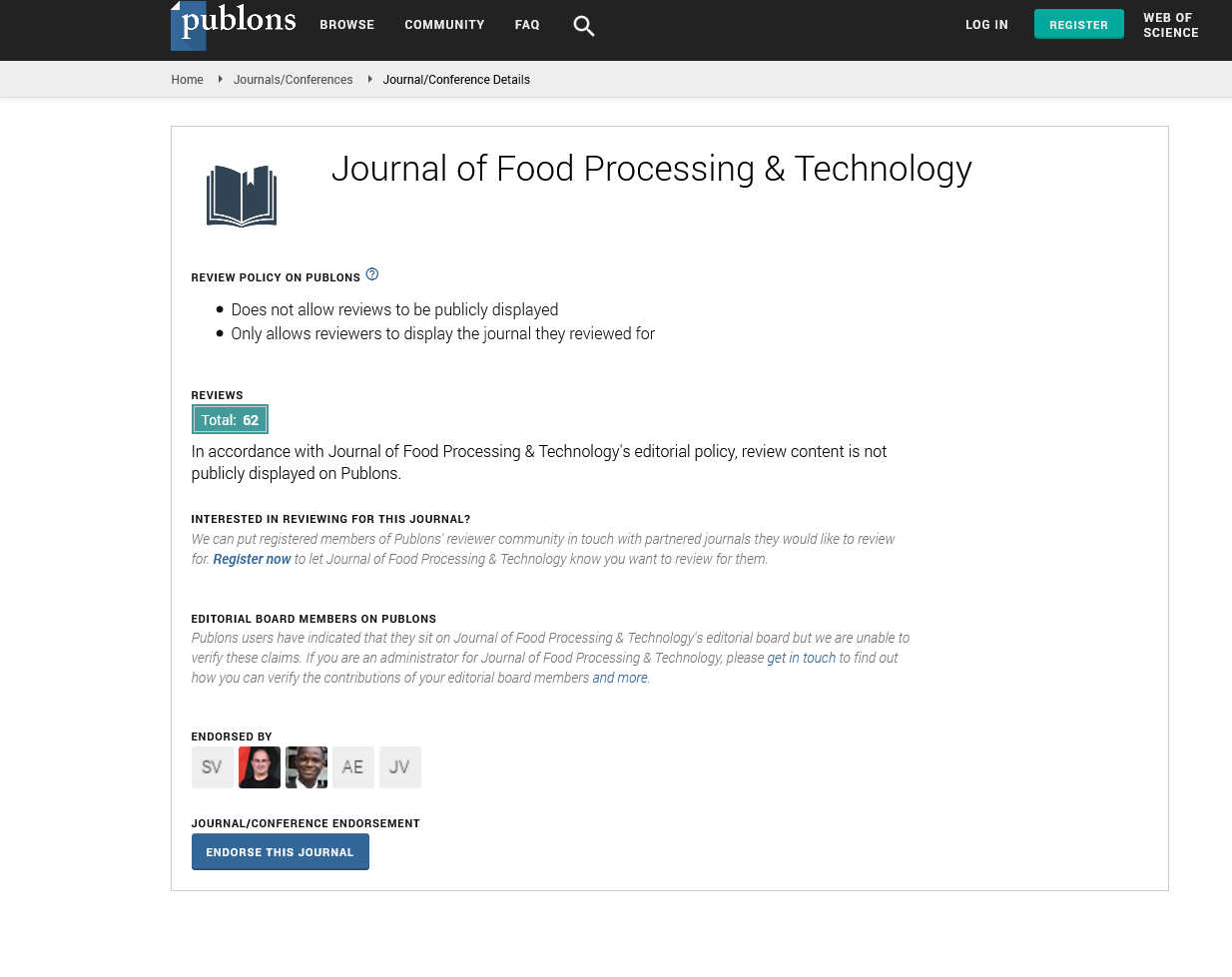Indexed In
- Genamics JournalSeek
- Academic Keys
- JournalTOCs
- China National Knowledge Infrastructure (CNKI)
- Access to Global Online Research in Agriculture (AGORA)
- Centre for Agriculture and Biosciences International (CABI)
- RefSeek
- Directory of Research Journal Indexing (DRJI)
- Hamdard University
- EBSCO A-Z
- OCLC- WorldCat
- Scholarsteer
- SWB online catalog
- Publons
- Euro Pub
- Google Scholar
Useful Links
Share This Page
Journal Flyer

Open Access Journals
- Agri and Aquaculture
- Biochemistry
- Bioinformatics & Systems Biology
- Business & Management
- Chemistry
- Clinical Sciences
- Engineering
- Food & Nutrition
- General Science
- Genetics & Molecular Biology
- Immunology & Microbiology
- Medical Sciences
- Neuroscience & Psychology
- Nursing & Health Care
- Pharmaceutical Sciences
Perspective - (2025) Volume 16, Issue 2
Sustainable Approaches to Reducing Food Waste in Processing Industries
Oliver Kowalski*Received: 28-Mar-2025, Manuscript No. JFPT-25-29640; Editor assigned: 31-Mar-2025, Pre QC No. JFPT-25-29640; Reviewed: 14-Apr-2025, QC No. JFPT-25-29640; Revised: 22-Apr-2025, Manuscript No. JFPT-25-29640; Published: 28-Apr-2025, DOI: 10.35248/2157-7110.25.16.1155
Description
Food waste has become a pressing concern for both environmental and economic reasons. The processing sector, which handles large volumes of raw materials, plays a critical role in determining how much food is lost before reaching consumers. Sustainable strategies are increasingly being developed to reduce waste and improve resource efficiency. One major source of waste arises from by-products generated during processing. Peels, seeds, and pulp are often discarded, yet they contain valuable nutrients and bioactive compounds. Innovative methods are being implemented to transform these materials into value-added products. For example, citrus peels can be processed into pectin for use in jams and confectionery, while grape pomace from wine production serves as a source of dietary fiber and antioxidants.
Improving storage and processing efficiency is another key strategy. Modern equipment with advanced monitoring systems reduces spoilage by maintaining optimal temperature and humidity conditions. Automated sorting technologies using machine vision ensure that raw materials are utilized more efficiently, minimizing rejection of edible components. Food waste reduction also benefits from the adoption of circular economy principles. Instead of discarding by-products, industries are repurposing them for animal feed, bioenergy, or compost. This not only reduces environmental impact but also provides additional revenue streams. For instance, starch-rich waste from potato processing is increasingly used in bioethanol production.
Consumer demand for sustainability has encouraged companies to communicate their waste-reduction practices as part of brand identity. Products that incorporate upcycled ingredients are gaining popularity, particularly among environmentally conscious consumers in Europe and North America. Transparency in sourcing and production helps build consumer trust while differentiating products in competitive markets.
Collaboration across the supply chain is essential for reducing waste. Processors are working with farmers to optimize harvesting schedules and with retailers to match production volumes more closely with demand. Digital platforms and predictive analytics support better forecasting, reducing surplus production and minimizing disposal.
Policy frameworks are also driving change. Governments are setting targets for reducing food waste and offering incentives for industries to adopt sustainable practices. Compliance with such regulations not only avoids penalties but also positions companies as leaders in sustainability. Future research is focused on expanding the utilization of food by-products for functional ingredients, nutraceuticals, and packaging materials. Advances in extraction technologies, such as supercritical fluid extraction, are enabling efficient recovery of valuable compounds from waste streams.
Reducing food waste in processing industries is both a responsibility and an opportunity. By adopting sustainable practices, industries can lower costs, protect the environment, and contribute to global food security. The transition toward resource-efficient systems ensures that food processing plays a constructive role in addressing one of the most urgent challenges of our time.
Citation: Kowalski O (2025). Sustainable Approaches to Reducing Food Waste in Processing Industries. J Food Process Technol.16: 1155.
Copyright: © 2025 Kowalski O. This is an open access article distributed under the terms of the Creative Commons Attribution License, which permits unrestricted use, distribution and reproduction in any medium, provided the original author and source are credited.


